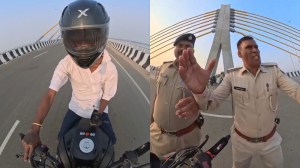Two years into the military standoff along the Line of Actual Control in Ladakh, Beijing has reached out to New Delhi to revive bilateral dialogue and set the stage for the BRICS (Brazil-Russia-India-China-South Africa) summit in China later this year.
Beijing has proposed a series of events to kickstart the dialogue, starting with possible high-level visits from both sides.

🗞️ Subscribe Now: Get Express Premium to access the best Election reporting and analysis 🗞️
Story continues below this ad
To begin with, Beijing has proposed a visit by Chinese State Councillor and Foreign Minister Wang Yi to India as early as this month. This is to be followed by a reciprocal visit by External Affairs Minister S Jaishankar. The Chinese side has also proposed a series of high-level visits by its top Politburo members and key officials in President Xi Jinping’s regime.
The Chinese have also proposed an ‘India-China Civilization Dialogue’ to be held in both countries. They have also proposed an India-China Trade and Investment Cooperation Forum and an India-China Film Forum.
But China’s ultimate and clear objective is to host Prime Minister Narendra Modi for the in-person BRICS summit which will be attended by Russian President Vladimir Putin as well. China, which also holds the chair for the RIC (Russia-India-China) trilateral this year, could also host the leaders’ summit on the sidelines of the BRICS summit.
In the current circumstances, it is politically difficult for Modi to attend an in-person meeting with Xi — when the border standoff has still not been resolved. Their last face-to-face meeting was in Brazil for the BRICS summit in November 2019. In October 2019, Xi had visited India for an informal summit in Mahabalipuram.
Story continues below this ad
The last BRICS summit to take place in China was in Xiamen in September 2017 which was attended by Modi. In fact, the Doklam border standoff was resolved after two-and-half months, just before the BRICS summit.
ExplainedA Window Opens
With China emerging as India's major adversary, any form of outreach is a sign of willingness to engage and resolve hot-button issues. The BRICS summit this year could be that opportunity - as was the case in 2017 when Doklam was resolved days before the BRICS summit in China. Russia's war with Ukraine, however, adds a layer of complexity to India's diplomatic choice.
This time, by reaching out with a proposed Foreign Minister-level visit, Beijing is signalling that it is keen to bring ties back on track.
But on the ground, from New Delhi’s perspective, that’s easier said than done. The standoff in eastern Ladakh began on May 5, 2020 following a violent clash in the Pangong lake areas and both sides gradually enhanced their deployment by rushing in tens of thousands of soldiers as well as heavy weaponry.
As a result of a series of military and diplomatic talks, the two sides completed the disengagement process on the north and south banks of Pangong Tso in February 2021, and in the Gogra area in August. While troops are still to disengage in two other areas, the broader de-escalation is nowhere near the horizon. The standoff remains unresolved with about 50,000 troops amassed on either side of the LAC.
Story continues below this ad
A potential window of opportunity to unlock the standoff exists: the 14th BRICS summit in 2022 is going to be hosted by China. Just like Doklam border stand-off was resolved days before the summit in September 2017 in Xiamen, officials feel there is a lever to be used.
The timing for beginning the groundwork for the proposed BRICS summit is also significant – Russia is facing a global opprobrium for its war on Ukraine. One of the members of BRICS, Russia will be part of the summit, and standing with the Russian leader will be perceived as an endorsement of sorts.
From Delhi’s calculus, Beijing’s outreach is an opportunity since two years of strained ties has led to the slide of gains made in the last three decades. While India has always maintained that the border situation has adversely impacted bilateral ties, China has insisted that the border dispute should be handled appropriately and the larger picture of bilateral ties should be kept in mind.
This divergence of approach has meant that there have been no bilateral visits, although there have been focussed bilateral meetings between Indian and Chinese Foreign Ministers and Defence Ministers in other countries, perceived to be neutral venues like Russia and Tajikistan. The two sides have also participated in several multilateral summits including virtual summits of BRICS, G-20, SCO among others.
Story continues below this ad
Officials said New Delhi’s approach that three “mutuals” are required to mend strained ties between India and China is key. In January 2021, Jaishankar had described the three “mutuals” as mutual respect, mutual sensitivity and mutual interests and said these were determining factors for ties.
Explained: A Window Opens
With China emerging as India’s major adversary, any form of outreach is a sign of willingness to engage and resolve hot-button issues. The BRICS summit this year could be that opportunity—as was the case in 2017 when Doklam was resolved days before the BRICS summit in China. Russia’s war with Ukraine, however, adds a layer of complexity to India’s diplomatic choice.









